The most significant number of the 2020 baseball season was 60 -- the number of games most teams played in this pandemic-ravaged year. The Los Angeles Dodgers finally earned their place as World Series champions, and after going 43-17 in the regular season -- a record-tying 116-win pace -- a lingering question will always be whether the shortened season denied them an argument as one of the greatest teams of all time.
As we close the books on 2020, let's take one last look at the 2020 season and find one fun, interesting, telling or frivolous stat for each team that tells us a little something about happened.
Jump to a team:
AMERICAN LEAGUE
BAL | BOS | CHW | CLE | DET | HOU | KC | LAA | MIN | NYY | OAK | SEA | TB | TEX | TOR
NATIONAL LEAGUE
ARI | ATL | CHC | CIN | COL | LAD | MIA | MIL | NYM | PHI | PIT | SD | SF | STL | WSH

The number: Ketel Marte, one home run every 90.5 at-bats
We'll kick things off with Marte, because he's a good example of the difficulty in evaluating individual players on their 2020 performance. In 2019, when he finished fourth in NL MVP voting, Marte homered every 17.8 at-bats. That was a surprise given his previous output, but the metrics backed up the power numbers as he hit the ball harder and in the air more often.
Marte did suffer a wrist injury in early September, although at the time he said it had been bothering him only a few days. One thing I noticed is Marte's approach was more passive in 2020. His first-pitch swing percentage went from 28.5% to 21% and his zone swing percentage went from 70.4 to 61.6. That didn't produce a better walk rate, however, as that figure plummeted from 8.4% to just 3.6%. The Diamondbacks had the second-lowest home run rate in the majors in 2020. They need Marte (and Eduardo Escobar) to get back to their 2019 production, and in Marte's case perhaps that simply means being more aggressive in the strike zone.
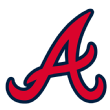
The number: Freddie Freeman hit .341 (and won the MVP Award)
When Freeman signed his eight-year extension back in 2014, I compared him to John Olerud. Both were tall, left-handed first basemen with moderate power and an all-fields approach. The comparison has held up pretty well. Freeman did have a 38-homer season in 2019 and 34 in 2016, and Olerud topped out at 24, but Freeman has now had his 1993 Olerud season (the year Olerud hit .363 and finished third in the MVP voting). Freeman has a .295 career average, the same as Olerud. Through age 30, Olerud had 39.9 career WAR and Freeman sits at 38.8.
Now the Braves have to determine what's next for Freeman since 2021 is the final season on that contract. It's possible that 2020 was an outlier -- Freeman's OPS+ was between 132 and 157 each year from 2013 to 2019 -- but Freeman's big improvement in strikeout-to-walk ratio suggests he might be hitting a peak he can sustain for a few seasons. Olerud had 18.3 WAR from age 31 on and I think Freeman will outperform that ... in a Braves uniform.
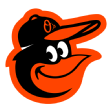
The number: 0, the number of Orioles pitchers who qualified for the ERA list
To qualify, you must average one inning per team game played. Alex Cobb led the team with 52.1 innings. To be fair, only 40 pitchers across the majors qualified compared to 61 in 2019 and 58 in 2018, so the Orioles were hardly the only team to play it conservative in 2020. But this gets to the bigger picture of Baltimore's struggles to find starting pitching in recent seasons. The last Baltimore starters with a sub-4.00 ERA were Kevin Gausman and Chris Tillman in 2016. The last one with an ERA below 3.50 was Wei-Yin Chen in 2015. Below 3.25? Erik Bedard in 2007. And the last one with a sub-3.00 ERA was Mike Mussina way back in 1992. OK, finding another Hall of Famer like Mussina is wishful thinking, but the Orioles desperately need to find a Tillman -- somebody who can chew up innings and a better-than-average ERA, even if he isn't an ace.

The number: 5.85 runs allowed per game
Yes, that number is as hideous as it looks. Only the Rockies allowed more runs per game. The Red Sox allowed the most home runs, the highest on-base percentage and issued the third-highest walk rate. It was the third-most runs per game allowed in franchise history. They gave up 10 or more runs in nine of their 60 games, including one three-game stretch when they lost 17-8, 10-3 and 11-5 while giving up 44 hits and committing six errors. The problem is this wasn't necessarily just a fallout from the coronavirus pandemic as the Red Sox also allowed more than five runs per game in 2019.
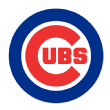
The number: Kyle Schwarber hit .188
This is perhaps the best way to sum up the weirdness of 2020: Schwarber was one of seven qualifying batters to hit under .200. In reverse order: Evan White (.176), Joey Gallo (.181), Schwarber, Bryan Reynolds (.189), Max Muncy (.192), Matt Olson (.195) and Carlos Santana (.199). The Cubs non-tendered Schwarber while Santana signed a two-year, $17.5 million contract with the Royals. Go figure.
In a normal season, most players hitting under .200 eventually get their average above the Mendoza Line or eventually find themselves riding the pine more often. In fact, since 1969 there had been just nine qualifying batters to finish the season under .200. And, yes, I'm going to list them all:
Jim Sundberg, 1975 Rangers (.199)
Ivan DeJesus, 1981 Cubs (.194)
Rob Deer, 1991 Tigers (.179)
Carlos Pena, 2010 Rays (.196)
Mark Reynolds, 2010 Diamondbacks (.210)
Carlos Pena, 2012 Rays (.197)
Dan Uggla, 2013 Braves (.179)
Chris Davis, 2014 Orioles (.196)
Chris Davis, 2018 Orioles (.168)
The interesting thing about the seven players from 2020 is all will surely be regulars in 2021 -- a chance for redemption ... or a chance to join Pena and Davis is a club nobody wants to join.
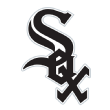
The number: Went 14-0 in games started by opposing left-handed pitchers
Actually, including the postseason, the White Sox went 15-0 (they beat the A's in the game Jesus Luzardo started and then lost the two games the A's started a righty). Kansas City's Kris Bubic had the two best outings of any lefty (game scores of 58 and 54) while the Cubs' Jon Lester had the worst two (a combined 15 runs in 7.1 innings).
Overall, the White Sox hit .276/.351/.522 versus southpaw starters. Tim Anderson was the biggest lefty killer, hitting .449 with seven doubles and six home runs in just 49 at-bats. Of the 11 White Sox to bat at least 100 times, Nomar Mazara was the only lefty, and Yasmani Grandal and Yoan Moncada are switch-hitters. Of course, this also means the White Sox went just 21-25 in games started by right-handers. Indeed, with so many right-handed batters, the White Sox hit with the platoon advantage just 46.9% of the time, 27th in the majors (the Braves, Yankees and Astros were lower). Let's see if they do end up adding a couple of lefty hitters before the offseason is over.

The number: Homered, walked or struck out in 40.7% of their plate appearances
If baseball in 2021 is facing an existential crisis, it's the lack of balls in play. The rate of three true outcomes -- home runs, walks and strikeouts, meaning plate appearances that don't end with fielders doing anything -- continues to rise, increasing in 2020 to nearly 36.1% of all plate appearances, even though pitchers didn't hit. That's up 5.5% from 2015 and 9% from 2005.
That gets us to the Reds, who had the second-highest rate of three true outcomes in 2020. The top five:
Rays: 41.2%
Reds: 40.7%
Brewers: 40.1%
Cubs: 39.3%
Braves: 39.0%
Of those five teams, only the Braves had a top-10 offense. The Reds were the worst of the group, ranking 28th in the majors in runs per game even though they were fifth in the majors in home run rate and second in walk rate. The problem, of course: They hit .212. Singles and doubles are important, too.
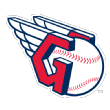
The number: Jose Ramirez, second in AL MVP voting
Ramírez has now finished third, third and second over the past four seasons in the MVP voting (and tops Francisco Lindor in bWAR over that span, 20.5 to 19.6). The point being not that Ramírez is necessarily better, but that's it hard to argue that Lindor is clearly better. Ramírez rarely gets mentioned as one of the best players in the game, yet since his first full season in 2016, he ranks fourth in bWAR behind Mike Trout, Mookie Betts and Nolan Arenado (Lindor is fifth). He's fifth in fWAR, behind Trout, Betts, Anthony Rendon and Christian Yelich (Lindor is sixth).
You can't necessarily call Ramírez underrated given how well he has done in MVP voting, but it's also fair to say he doesn't get the recognition of his teammate (as least, his teammate at this moment). He lacks Lindor's flash, he's short and pudgy, he doesn't hit the ball especially hard (32nd percentile in hard-hit rate), he's not especially fast although he does steal bases, he doesn't play shortstop like Lindor or right field like Betts. He did have that bad first half in 2019, but otherwise has crushed baseball for four seasons. Simply: He's a baseball player and at 28 still has many good seasons to come (he's signed through 2023 at a team-friendly rate, so hopefully those years will remain in Cleveland).

The number: They were the only team in 2020 to win a series from the Dodgers
Hey, if you can't say something nice ... so we found something nice to say. The Dodgers played 23 series in 2020, including the playoffs, and the only series they lost was when the Rockies beat them two of three at Dodger Stadium in early September. The Dodgers won the opener 10-6 with five home runs, but then the Rockies won 5-2 behind seven strong innings from German Marquez and 7-6 on Matt Kemp's two-run homer in the eighth inning. Speaking of Marquez, here's another nice thing to say: He led the NL innings pitched with 81.2 and remains one of the most underrated starters in the majors.

The number: 6.37 rotation ERA
The rebuilding Tigers are building around a young rotation -- which makes the above ERA, the worst in the majors, somewhat concerning. The Tigers resisted trading Matthew Boyd after he fanned 238 batters in 2019, but after posting a 6.71 ERA, he will need to reestablish himself. Rookies Casey Mize and Tarik Skubal, promoted from the alternate site, combined for a 6.27 ERA and 16 home runs in 60.3 innings. Michael Fulmer returned after missing all of 2019 but struggled with an 8.78 ERA in 10 starts. Only Spencer Turnbull (3.97) pitched well. Mize and Skubal retain their rookie eligibility for 2021, with Matt Manning perhaps joining them in the rotation, but this group needs to take a big step forward.
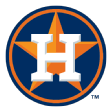
The number: Team batting average of .240
Let's face it: The Astros did nothing to silence their critics in 2020 as they struggled at the plate. Here's one way to look at it. FanGraphs has a stat called weighted runs created (wRC+), which takes a team's offensive stats and adjusts for league run-scoring environment and home park. The 2019 Astros had a 125 wRC+, second best of all time behind only the fabled 1927 Yankees. The 2017 Astros rank seventh on the list with a 121 wRC+. The 2020 Astros rank 17th -- just for 2020.
The Astros had been a great offensive team. In 2019, they hit .274 compared to the American League average of .253. In 2017, they hit .282, 19 points better than the second-best team in the league and 26 points better than the .256 league average. In 2020, the AL average fell to .243, its lowest since the .239 mark in 1972 and led to adding the DH in 1973. Jose Altuve dropped from .298 to .219. Alex Bregman dropped from .296 to .242, Yuli Gurriel from .298 to .232 and Yordan Alvarez from .313 to playing only two games. Obviously, it's easy to dismiss what happened in 2020, but in the Astros' case, maybe it's not quite so easy.

The number: Adalberto Mondesi, six steals of third base
I sometimes feel as if Mondesi is single-handedly keeping the stolen base alive. He swept 24 in 2020, nine more than Trevor Story, the No. 2 guy. A quarter of those were steals of third, one of the most exciting plays in baseball. I also feel Mondesi is a man out of time. We need to transport him back to the 1977 Royals, where Whitey Herzog could let him run wild on the bases and teach him to better utilize his speed at the plate. Like nearly every player of this generation, Mondesi is trying to hit every pitch as hard as he can -- and he does have some pop (47th percentile in hard-hit rate). That comes at a price: He swung and missed 40% of the time (only Keston Hiura, Miguel Sano and Luis Robert swung and missed more often among regulars). He also rarely walks, which means he's not on base enough to take more advantage of his speed. I'd love to see him sacrifice some power, focus on putting the ball in play and use his speed.
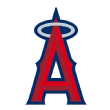
The number: Mike Trout, 168 OPS+
Yep, Trout had a bad season. That adjusted OPS matched the lowest of his career, from his rookie season in 2012. His .281 batting average was a career low (not including his call-up in 2011). His strikeout and walk rates were his worst since 2015. He failed to lead the AL in on-base percentage for the first time since 2015. He finished fifth in the MVP voting -- what a bum.
On the other hand ... Trout is just the ninth player with at least nine qualifying seasons of an OPS+ of 168 or higher, matching Tris Speaker at nine. Next on the list at 10: Rogers Hornsby and 19th-century star Dan Brouthers, who wasn't exactly facing guys who threw 97 mph. He does have a way to go to catch Babe Ruth (15 seasons) and Barry Bonds (13), but I wouldn't it put it past him. We have Statcast data back to 2015 and Trout's average exit velocity and hard-hit rate were career bests. He's now at 302 career home runs and the Bill James Handbook gives him a 12% chance of beating Barry Bonds' career record. Now, can we get this guy into the postseason?

The number: Mookie Betts, 2.79 career MVP shares
One of my favorite "junk" stats is MVP award shares. Invented by Bill James, award shares are the percentage of points a player gets in the MVP voting out of the maximum number possible. In 2020, a first-place vote is worth 14 points, so a unanimous selection from all 30 voters is worth 420 points. Betts finished second to Freddie Freeman with 268 points, so that's 0.64 award shares. When he won AL MVP honors in 2018, he received 410 out of a maximum 420 points, or 0.98 award shares. With one win and two seconds, Betts is already 46th on the all-time MVP awards share list -- just behind Roberto Clemente and Ernie Banks and already ahead of Johnny Bench and Derek Jeter. Among active players, he trails only Joey Votto, Miguel Cabrera, Mike Trout and Albert Pujols. Given Betts is still just 28, he's going to climb a lot higher -- it's not inconceivable he could climb into the top 10. If he wins another MVP award with, say, 0.80 shares, that would move him up to 22nd. Throw in two 0.50 shares and he's at 4.59, 16th all time. Alex Rodriguez is currently 11th with 5.23 MVP shares, and Hank Aaron, Joe DiMaggio and Lou Gehrig are tied for eighth at 5.45. Your early NL MVP favorite for 2021: Mookie Betts.

The number: The Marlins went 10-4 in seven-inning games
Thanks to the expanded postseason format, the Marlins made the playoffs for the first time since 2003 and even upset the Cubs in the first round. They did this despite the upheaval to their roster the opening series COVID-19 outbreak created. They finished 31-29 despite getting outscored by 41 runs -- including losses of 29-9, 15-0, 11-0 and 11-1. That's a 56-run differential in just those four games alone, so analyzing the Marlins' season is probably more difficult than with any other team. They were shut out seven times, most in the majors, after also leading with 22 shutouts in 2019. What they did do was play well in their seven doubleheaders. They swept three of them and split the other four. The Marlins were victims of the COVID-19 season -- but also beneficiaries.
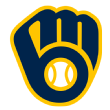
The number: Christian Yelich hit .205 with a 30% strikeout rate
The 2018 MVP and 2019 MVP runner-up, Yelich had led the National League both seasons in batting average, slugging percentage, OPS and adjusted OPS. Then came a miserable 58-game stint in 2020, a key reason the Milwaukee offense struggled to score runs. "It's not going to happen again," manager Craig Counsell said last week. "Whenever we ask the question, 'Why did that happen?' Christian doesn't have an answer, necessarily. He can't explain all of it. I can't explain all of it. I don't think Christian wanted it to happen. But it did."
When Yelich hit the ball, the contact was still elite: 99th percentile in average exit velocity and 98th percentile in hard-hit rate. There was certainly some bad luck, as his expected batting average based on quality of contact was .250. Still, .250 is a big drop from .326 and .329. It was all about the swing and miss, which increased from 28.4% to 33.6%. Well, it was more than that. His overall swing rate went from 45.2% to 34.6%, with a similar drop in swing rate on pitches in the zone. His chase rate actually went down 10%, which is normally a good thing. His first-pitch swing rate fell from 29.5 to 13.4. See Ketel Marte above in the Diamondbacks comment, who had the same issue with being more passive than in the past. Remember, in-game video access was eliminated in 2020 (due to COVID-19 restrictions, not the Astros' cheating scandal). Several hitters, most notably J.D. Martinez and Javier Baez, complained about this. Maybe it was just a focus issue. Yelich's jump rate in the outfield was extremely poor, according to Statcast (fifth percentile). For now, chalk it up as one of those and expect peak Yelich to return in 2021.

The number: Marwin Gonzalez averaged 27.7 seconds on his home run trots
After setting the major league record for home runs in 2019, the Twins were not quite as proficient with the long ball in 2020, but when they did hit them, they sure enjoyed them. Gonzalez's average trot time around the bases on his five home runs was second slowest in the majors behind Pedro Severino of the Orioles, who averaged 28.0 seconds. Miguel Sano was third slowest at 27.6 seconds and Nelson Cruz fifth slowest at 27.4. The slowest trot of the season goes to Carlos Santana of Cleveland on Aug. 18 against the Pirates at 35.9 seconds -- although on replay it looks as if he assumed the ball was foul so he was slow out of the box. The second slowest was Michael Conforto of the Mets at 34.4 seconds with an Aug. 4 home run off Patrick Corbin of the Nationals -- but that was a weird one as well, because Conforto missed first base (he wasn't sure it was out so he was running hard) and had to go back and touch the bag.

The number: minus-43 net gain on the bases
According to data from Baseball Info Solutions, the Mets were the worst baserunning team in 2020. Factoring in things such as how often a team goes first to third on a single, outs on the bases and stolen bases/caught stealing, the Mets had a net gain of minus-43 bases below average. For example, the MLB average on going second to home on a base hit is 60%; the Mets did it just 47% of the time. They also tied the Brewers for most double plays grounded into.
The leading culprits: Wilson Ramos (-11), J.D. Davis (-11), Robinson Cano (-9), Pete Alonso (-6), Jeff McNeil (-6) and Michael Conforto (-5). It was a group effort as the Mets simply didn't have any outstanding runners (Brandon Nimmo was +3, best on the club). The Mets underscored their expected run total based on their offensive stats by about 39 runs. Some of that was a lack of clutch hitting, but some of that was the subpar performance on the bases. Good baserunning doesn't guarantee anything -- the Rockies and Diamondbacks ranked 1-2 and were still bad offensive teams -- but it's one of those small things the Mets need to improve in 2021.
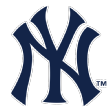
The number: Slugged .358 on the road
This might be my favorite weird number of 2020. The Yankees ranked fifth in the majors in home runs and yet had the worst slugging percentage in the American League on the road. At home, they hit 67 home runs in 31 games and slugged .530; on the road, they hit 27 home runs in 29 games and slugged .358 -- better only than the Cardinals and Pirates. Luke Voit hit 16 of his 22 home runs at Yankee Stadium, DJ LeMahieu eight of 10, Gary Sanchez seven of 10, Gio Urshela six of six. Not surprisingly, the Yankees went 22-9 at home and 11-18 on the road.
Some of this is just the 60-game weirdness. The Yankees actually slugged better on the road in 2019 (thank you, Baltimore), although over the past four seasons they have hit for more power at Yankee Stadium:
2017-2020 home: .263/.343/.480, HR every 18.3 ABs
2017-2020 road: .253/.329/.443, HR every 23.1 ABs
As a result, the Yankees are 183-91 at home the past four seasons (.668 win percentage) and 144-128 on the road (.529). On a related note, the Yankees have finished first in the AL East only once in the past eight seasons.
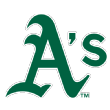
The number: Four relievers had a sub-2.00 ERA
This is a cute way of saying the A's had a really good bullpen in 2020 -- a huge reason they won the AL West for the first time since 2013 and made a third straight playoff trip. Liam Hendriks, J.B. Wendelken, Yusmeiro Petit and Jake Diekman each threw at least 20 innings with a sub-2.00 ERA. Obviously, that's a low threshold, but only seven teams since 1969 have had four pitchers with at least 20 innings do that (six of them had four while the 2010 Padres had six). The A's used 19 pitchers in 2020; only Cleveland used fewer (and three of Oakland's pitchers threw less than four innings). Their top five starters made 53 of the 60 starts (trade acquisition Mike Minor joined the rotation in September and made four). So the bullpen was dominant and the rotation was healthy. That's a good recipe for regression, and then factor in that Hendriks and Petit are free agents (along with Joakim Soria, who had a 2.82 ERA).

The number: 6.92 bullpen ERA
That's not quite the worst bullpen ERA of all time. In fact, it's not even the worst in franchise history, as the comical 1930 Phillies, a team that allowed 7.69 runs per game, posted an unseemly 8.01 ERA in relief. Still, the 2020 Phillies' bullpen was the worst in modern history. At least Joe Girardi can laugh about it now. "I was talking to a colleague the other day, and I really believe that we could have told the hitters what was coming and it wouldn't have turned out as bad as it did," he said last week in a Zoom meeting with reporters.
Yes, it was that kind of season. In 59 games, the Phillies' relievers gave up at least five runs 13 times -- more than a fifth of the games. They gave up three or four runs in 12 more games. They gave up zero runs only 12 times. Opposing batters hit .315/.391/.555 against the bullpen. That's about what Manny Machado hit last season. So every batter against Phillies relievers was basically Manny Machado. The good news: The free-agent market is flooded with relievers. Now Dave Dombrowski just has to pick the right ones to sign.

The number: Ke'Bryan Hayes, 1.124 OPS
Hayes debuted on Sept. 1 with a home run and a double and was one of the best players in the majors the final month, hitting .376/.442/.682 in 24 games. It was one of most impressive September call-ups in history and Hayes finished sixth in the Rookie of the Year voting -- and you can argue that he deserved to win, as he actually topped all NL rookies who received votes with 1.9 WAR. The good news: He's still a rookie in 2021!

The number: 17 seasons Yadier Molina has played with the Cardinals
Molina is a free agent after hitting .262/.303/.359 in 2020, and even though the Cardinals had to play 53 games in 44 days, including 11 doubleheaders, he still started 42 of the team's 58 games. It's difficult to imagine the Cardinals without him behind the plate, and manager Mike Shildt doesn't want to think of that possibility either. "Thinking about life without Yadi, my head's not there," Shildt said last week. "I don't choose to put my mindset there, because that's a hard place for me to go mentally. I'm not naive, and he may not come back. I get that, and I'll pivot. But as far as putting mental energy toward thinking about No. 4 not being behind the plate for us, I haven't put a lot of consideration into that." The last catcher besides Molina to lead the team in games started? Mike Matheny, way back in 2004. Molina was the rookie backup that season.

The number: Hit .310 with runners in scoring position
The Padres did so many things well in 2020, including driving in runners when they had the opportunities. They hit .310/.383/.569 with runners in scoring position, leading the majors in both batting average and slugging percentage. Going back to the 1969, that's the fourth-highest batting average with RISP: 2013 Cardinals: .330; 1996 Rockies: .311; 2007 Tigers: .311; 2020 Padres: .310.
And it's easily the highest slugging percentage: 2020 Padres: .569; 1999 Indians: .520; 2019 Yankees: .518; 2020 Dodgers: .515.
Leading the way, Fernando Tatis Jr., who hit .400/.510/.775 with RISP. Manny Machado (.381) and Wil Myers (.357) weren't far behind. Of course, this is where we point out that this isn't necessarily a repeatable skill. After hitting .330 in 2013, the 2014 Cardinals fell off to .254 with RISP.
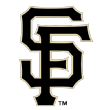
The number: Six players with at least 100 PAs slugged .500
The Giants moved in the outfield fences for 2020 and suddenly Oracle Park resembled Coors Field Bay Area. The distances didn't seem too dramatic -- left-center from 404 feet to 399, center field from 399 to 391 and triples alley in right-center from 421 to 415 -- but Oracle Park went from the toughest home run park in 2019 to an above-average home run park. Lefty hitters like Mike Yastrzemski, Brandon Belt and Brandon Crawford clearly benefited from the change. OK, 100 plate appearances isn't much of a cutoff, but the Giants were the only team in 2020 with six players to slug .500. Since 1969, only 22 teams have had at least six players do that in 100 plate appearances, so it's somewhat of a historical rarity, although five teams did it in 2019, including the Yankees with a record nine .500 sluggers. Overall, the Giants scored 4.98 runs per game, their highest since they scored 5.25 in 2004. Now, about that starting rotation ...
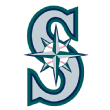
The number: Marco Gonzales ranked in the third percentile in fastball velocity
I wanted to highlight Gonzales, because he has quietly become one of the more underrated starters in the majors, going 36-24 with a 3.85 ERA the past three seasons for a bad team. He's the antithesis of what many teams look for these days: He doesn't throw hard, he doesn't generate many swings and misses, he doesn't have a high-spin fastball or curveball. I'm reminded of what Rays general manager Erik Neander told me last spring, that it's easy to focus on what a player doesn't do well. Gonzales does a lot of things well: He has become a strike-throwing machine (seven walks in 11 starts in 2020), he utilizes a cutter to get in on right-handed batters and limit hard contact and home runs, he has been durable, he even gets a decent amount of strikeouts (8.3 per nine innings). Bottom line: He knows how to pitch and we need more of those guys and perhaps a few less chasing radar gun readings.

The number: 31 starts where the starter threw 75 or fewer pitches
This, of course, is related to arguably the biggest moment of the 2020 season: Kevin Cash removing Blake Snell in Game 6 of the World Series, with Snell dominating and sitting on 73 pitches. "I did grind on [the decision in the offseason]. To some extent, I still am," Cash said last week. "You get so close to something that so many people have a hand in of getting there and being a game away from getting to Game 7, who knows what would've happened. If I didn't, I think there would be something wrong with that."
While Cash's decision set off a heated debate that can be described as old school versus new school, this is the way he managed his starting pitchers throughout 2020. Only the Braves had fewer "short" outings at 32, and that was more because of Atlanta's poor rotation than a deliberate strategy. The Rays, however, had the sixth-best rotation ERA in the majors. The Rays had the most "short" starts in 2019 with 65, but that was in large part because of their use of the opener (46 of their 65 short starts were two innings or less).
By the way, Cash pulled Snell with one out in the sixth -- about an average outing in length for a starter in the 2020 postseason. How does that compare to historical standards? As much as we bow down to the legends of Bob Gibson or Sandy Koufax or Jack Morris, the idea that playoff starters were always tossing complete games is ... well, not exactly accurate:
2020: 5.0 innings per start
2015-2019: 5.1
2010-2014: 5.2
2000-2009: 6.0
1990-1999: 6.1
1980-1989: 6.1
1970-1979: 6.1
1960-1969: 7.0
1950-1959: 6.2
There was a spike in length in the pitching-dominant 1960s and things are surely trending down -- but by about only three or four outs per game compared to the past 50 years (and the 2020 average was dragged down by the use of a few openers). There is no doubt that Cash's removal of Snell would not have happened even 10 years ago (heck, think back to 2015 when Terry Collins left in Matt Harvey for the ninth inning and cost the Mets the game and perhaps the World Series).

The number: The Rangers hit .217/.285/.364
The Rangers ranked last in the American League in batting average, on-base percentage and slugging percentage. They were next-to-last in walk-to-strikeout ratio, 13th out of 15 AL teams in home run rate and isolated power and last in batting average on balls in play. How much of it was the new park? Well, they hit .205/.263/.359 on the road -- ranking last in the AL average and OBP and 14th in slugging. Globe Life Field was certainly not the hitter's park that Globe Life Park was -- at least in its first year - but the Rangers were simply a bad offensive team. FanGraphs rates them with a wRC+ (weighted runs created, so park adjusted) of 67, which ranks ... well, tied with the 1920 Philadelphia A's for the worst since 1901. Prospects Josh Jung, Sam Huff and Leody Taveras should all get an opportunity in 2021.

The number: Teoscar Hernandez averaged 418 feet on his home runs
Of the 71 players with at least 10 home runs, only Marcell Ozuna had a longer average big fly distance than Hernández (a whopping 429 feet for Ozuna). Hernandez hit .289/.340/.579 with 16 home runs in 50 games. His longest blasts: 466 feet off Jordan Yamamoto of the Marlins and 459 feet off Aaron Loup of the Rays. Hernandez remains a tantalizing mix of tools: Fewer players hit the ball as hard as he does, but he has a poor approach and a lot of swing and miss, so we'll see if he maintain his 2020 numbers of a full season. He's also a plus runner (85th percentile in sprint speed), but a below average defensive outfielder (thus the Jays' interest in George Springer as a free agent). Still, at 28, he could have a few big seasons ahead of him.
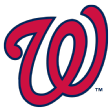
The number: Juan Soto's 1.185 OPS led the majors
Like all things 2020, this comes with an asterisk of sorts since Soto's numbers came in only 47 games, but his OPS was 82 points better than the No. 2 hitter in the majors, Freddie Freeman. Look how that gap compares to other recent leaders:
2020: Soto, 82 points over Freeman
2019: Christian Yelich, 17 points over Mike Trout
2018: Trout, 10 points over Mookie Betts
2017: Trout, 22 points over Aaron Judge
2016: David Ortiz, 30 points over Trout
2015: Bryce Harper, 104 points over Paul Goldschmidt
2014: Victor Martinez, 10 points over Jose Abreu
2013: Miguel Cabrera, 74 points over Chris Davis
